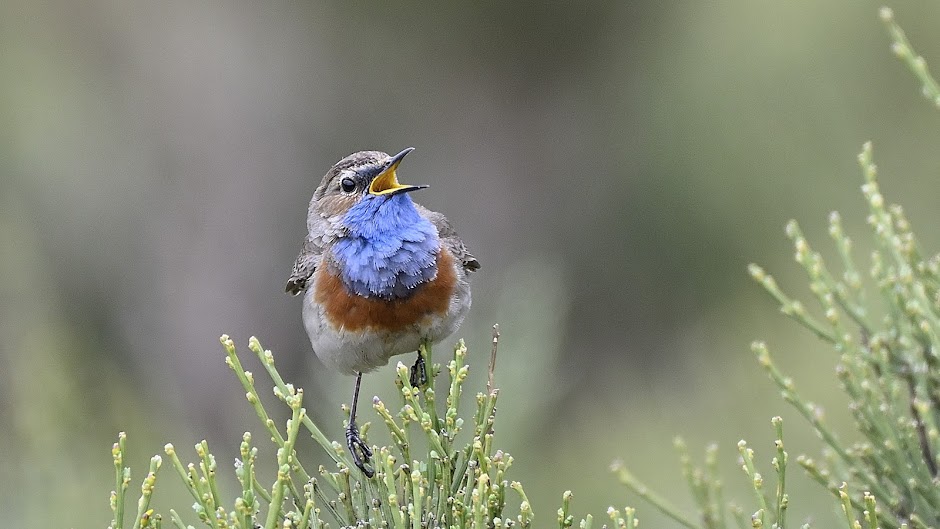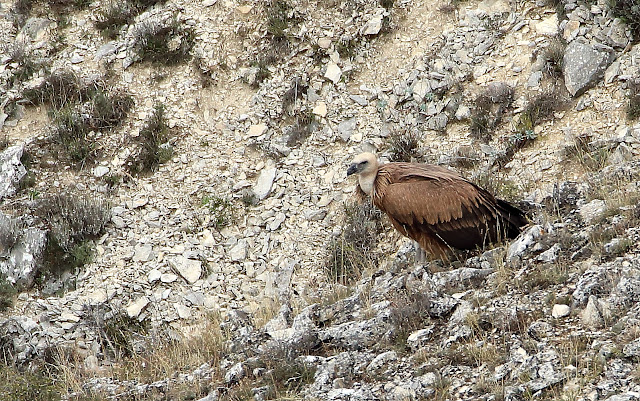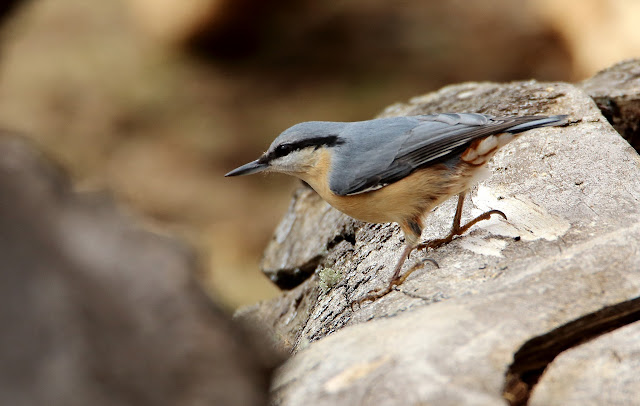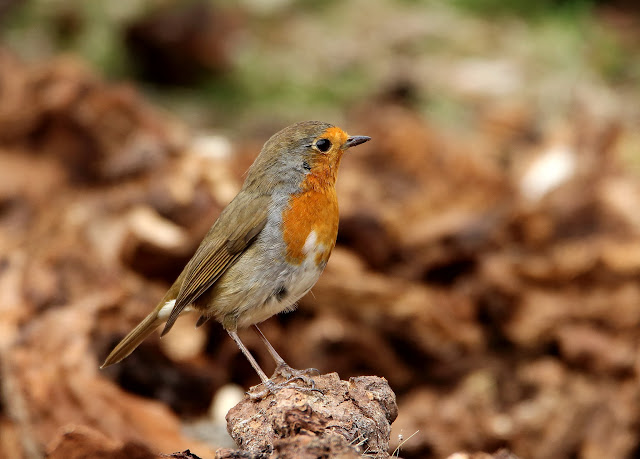Hola otra vez.
Hi again.
Esta entrada es de un viaje al Parque Natural del Cañón del Río Lobos situado entre las Provincias de Soria y Burgos.
This post is a trip to the Parque Natural del Cañón del Río Lobos located between the Provinces of Soria and Burgos.
El paseo por este Parque es muy bonito y se pueden ver muchas aves y tienen como principal protagonista al Buitre Leonado (Gyps
fulvus) con una ventaja añadida y es que se les puede observar desde arriba a su salida o regreso al cañón.
The walk through this Park is very beautiful and you can see many birds but whose main protagonist is the Griffon Vulture with an added advantage that they can be observed from upwards on their departure or return to the canyon.
Este año he observado que el Río bajaba con más agua que el año pasado lo que da mucha más belleza al paseo pues sus charcas estaban llenas de nenúfares y otras plantas acuáticas.
This year I noticed that the River has more water than last year which gives much more beauty to the walk because its ponds were full of Water Lilies and other aquatic plants.
Aunque las previsiones meteorológicas eran favorables para ver una buena salida del cañón de los buitres el tiempo no fue tan soleado como estaba previsto y al no hacer viento la salida se retrasó mucho lo que nos hizo acudir al propio cañón más tarde de lo esperado. De todos modos los pocos buitres que salieron nos permitieron tomar unas fotos bastante buenas y disfrutar con su paso por debajo de nuestra posición.
Although weather forecasts was good for observing a good going out of Vultures from the Canyon the weather was not as sunny as predicted and as there was no wind their taking off was delayed very much what made us to arrived to the Canyon later than expected. Anyway the few vultures who left allowed us to take some nice pictures and we enjoy seen them passing below our position.
Antes de llegar tuvimos tiempo de tomarnos un café y pudimos observar a este bonito alcaudón real meridional (Lanius
meridionalis).
Before arriving we had time to take a coffee and we saw this beautiful Southern
Grey Shrike.
Cuando estábamos esperando la salida de los buitres leonados (Gyps fulvus) pudimos observar varias parejas de chovas piquirrojas (Pyrrhocorax
pyrrhocorax).
When we were waiting for the departure of the Griffon Vultures we saw several pairs of Red-billed hough.
Vistas de parte del Cañón.
Views of a part of the Canyon.
Lo que tanto estuvimos esperando, a las 12:30 comenzaba la salida de los buitres leonados (Gyps fulvus).
What we were expecting so much the starting of the Griffon Vultures departure that occured at 12:30 am.
Este azor (Accipiter
gentilis) común nos cogió por sorpresa y no lo vimos hasta que estaba muy lejos.
This Northern Goshawk took us by surprise and we did not see it until it was far away.
Como ya os dije, al no hacer viento ni calor los buitres se tomaban un descanso antes de continuar con su pesado vuelo.
As I already mentioned, there was not wind nor heat the vultures were taking a break before continuing with his heavy flight.
Un adulto.
An Adult.
Un joven.
A juvenile.
Se puede apreciar que iban con los picos abiertos debido al esfuerzo del vuelo.
You can see that they were with open beaks due to the efforts of the flight.
Nada mas salieron los que estaban realmente hambrientos. El resto esperó hasta más tarde pero nosotros nos bajamos al cañón para continuar con la excursión.
No one came out but the hungriest. The rest waited until later but we decided to came down to the Canyon to continue with the tour.
Había muchos colirrojos tizones (Phoenicurus
ochruros). En la foto un macho.
There were many Black
Redstarts. In the photo a male.
La bonita ermita de San Bartolomé.
The beautiful Hermitage of San Bartolomé.
Mosquitero musical (Phylloscopus
trochilus).
Willow
Warbler.
Trepador azul (Sitta
europaea).
European
Nuthatch.
Pinzón vulgar (Fringilla
coelebs) macho.
Male of Common
Chaffinch.
Petirrojo europeo (Erithacus
rubecula) con leucismo parcial en el vientre.
European Robin with partial leucism on its belly.
Un ratón de campo (Apodemus sylvaticus).
A Long-tailed Field Mouse.
El colmenar de los frailes.
The Apiary of the Friars.
Hembra de colirrojo tizón (Phoenicurus ochruros).
Female of Black Redstarts.
También vimos varios pico picainos (Dendrocopos
major). En la foto un joven.
We also saw several Great
Spotted Woodpeckers. In the photo a juvenile.
Y en esta otra un macho.
And in this one a male.
Había gran cantidad de petirrojos europeos (Erithacus rubecula).
There were lots of European Robins.
El otoño ya ha llegado.
Autumn has arrived.
Uno de los estanques del Río.
One of the ponds River.
Y también abundaban los pinzones vulgares (Fringilla coelebs).
And also the Common Chaffinches were abundant.
Un bonito tandem de buitres leonados (Gyps
fulvus).
A nice tandem of Griffon
Vultures.
Y este es un joven.
And this is a juvenile.
Algunos aun estaban pidiendo alimento a sus progenitores.
Some even were begging for food to their parents.
Y después de mucho pedir le alimentaron.
And after being persistent it was feed.
Un gavilán común (Accipiter
nisus).
An Eurasian
Sparrowhawk.
Y un joven de roquero solitario (Monticola
solitarius).
And a juvenile of Blue Rock
Thrush.
Escribano soteño (Emberiza
cirlus).
Cirl
Bunting.
Los carboneros garrapinos (Periparus
ater) estaban buscando piñones.
Coal Tits were looking for pine nuts.
Y para terminar,como era de esperar, otro buitre leonado (Gyps
fulvus). Hasta pronto.
And finally as to be expected another Griffon Vulture. See you soon.





















































No hay comentarios:
Publicar un comentario